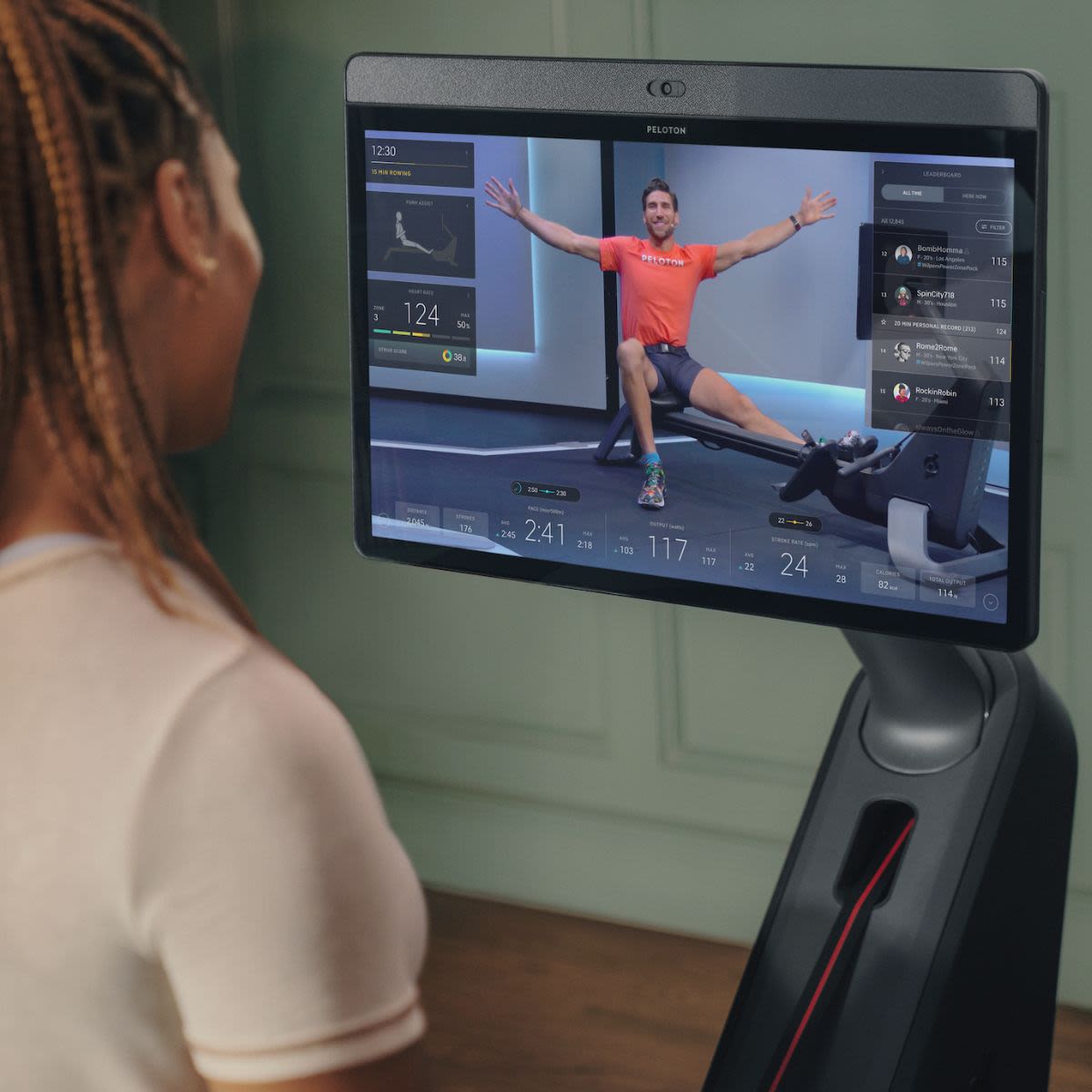
Understanding Your Peloton Row Metrics
Here’s what you need to know about the numbers you’ll see on screen in a rowing class.
By Alyssa Sybertz•
Hopping on any old rowing machine is going to give you an effective total-body workout—but when you add in the top-notch features of Peloton Row and our world-class instructors, it takes this dynamic and efficient form of exercise over the top. Apart from perfecting your rowing form and getting to know our new instructors, you’ll want to familiarize yourself with the metrics you see on the screen of your Peloton Row and what they mean. Here’s an overview of the numbers you’ll see and how you can use them to optimize your workout.
Discover more ways to reach your goals with Peloton
Stroke Rate
Stroke Rate is on the bottom right-hand side of your Peloton Row screen in class. Measured in strokes per minute, or SPM, this is the number of completed strokes you take every minute. Instructors will give a stroke rate target during class (just as they would give a cadence range during a class on the Peloton Bike), which will tell you how quickly you should be moving your body back and forth along the rail.
Pace
Your stroke rate isn’t quite the same as your speed; for that, you’ll need to look to the left to see your pace, which is the speed at which you would be moving through the water if you were rowing in a boat. It’s expressed as the number of minutes it would take you to row a boat 500 meters—which means that the faster you go, the lower this number will be. Also important to remember: Your pace comes from the power you bring to each stroke, not necessarily how fast you’re moving up and down the slide (or your SPM). During class, your instructor will give an indication of how intense your pace should feel and your Personal Pace Targets will provide a custom target pace range based on your ability level to help you follow these cues.
Output
In the center of the screen is your output. This metric will be familiar if you use the Peloton Bike, Peloton Bike+, or Peloton Tread. Measured in watts, output is the power you generate with each stroke. Just like your pace, your output won’t always increase as you increase your stroke rate. The best way to increase your output is to focus on getting a powerful drive, or a big push from the catch with your legs, and to work on maintaining a consistent pace and stroke rate.
Calories and Total Output
The smaller numbers in the left corner of the screen are calories and total output. Just like the numbers you would see in classes on other Peloton equipment, calories gives you a general idea of how many calories you have burned throughout class. Meanwhile, total output is the total power you generate throughout class, the formula that determines your place on the Leaderboard.
Distance and Strokes
In the left corner of the screen, you’ll find two more new metrics: distance and strokes. Measured in meters, distance is how far you’ve rowed over the course of the class if you were rowing on the water. For reference, a traditional rowing race like those competed at the Olympics are 2,000 meters (or 1.24 miles) long, while the Head of the Charles (one of the largest regattas in the world) is 4,800 meters (or about 3 miles) long.
Strokes is the total number of strokes you’ve taken over the course of your class, which is like the total number of steps you would take in a Peloton Tread class. To use the same reference points, a 2,000-meter race typically requires between 224 and 256 strokes, while a 4,800-meter race would be 540 to 614 strokes.
Rowing can be confusing at first but now that you’re all set with the metrics you can expect on Peloton Row, you can go into your next Row class more confident than your last. And remember, practice makes perfect! Once you start rowing regularly, these metrics will become second nature.
Ready to learn more? Read on for more information about the benefits of rowing with Peloton.
This content is for informational and educational purposes only and does not constitute individualized advice. It is not intended to replace professional medical evaluation, diagnosis, or treatment. Seek the advice of your physician for questions you may have regarding your health or a medical condition. If you are having a medical emergency, call your physician or 911 immediately.





